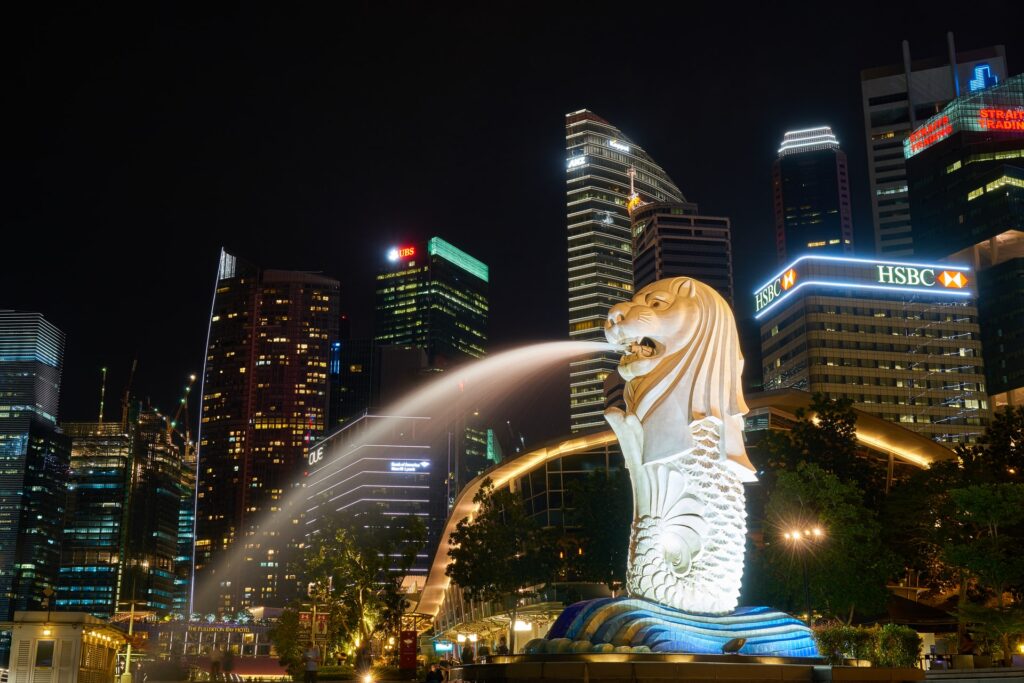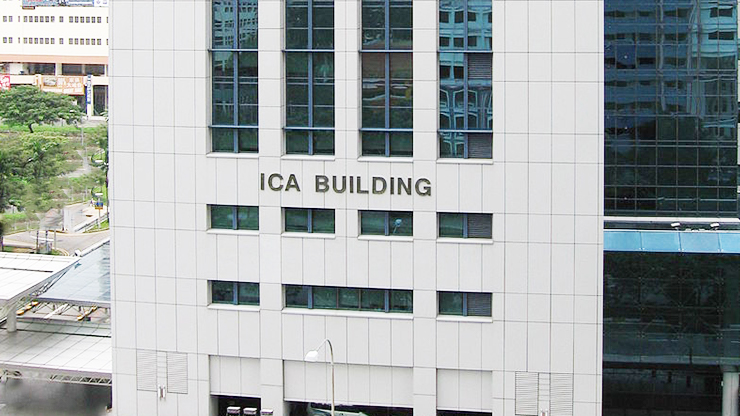The National Registration Identity Card is the legal identity document for all Singapore permanent residents and citizens. When an individual becomes a permanent resident or citizen or turns 15, they have one year to register for an NRIC. At the ages of 30 and 55, a person needs to re-register for their National Identification Card unless their current National ID card is less than ten years old.
The issuance of a National ID card is accompanied by a national registry. The Immigration and Checkpoints Authority, a department that falls under the Ministry of Home Affairs, is responsible for issuing the National ID card. The security of this card is essential as it provides access to your individual identity and a lot of personal data connected to you, including your criminal record and financial information.
You will require this card to access many of the services available in Singapore, including the process of creating a bank account. Singaporean authorities do not require you to carry the physical NRIC card with you at all times but bear in mind that even for a natural citizen, the physical card above the e-Card is often still required to confirm their ID. Many companies and businesses in Singapore habitually request sight of the card, but most often, producing any other documentation that can verify identity is enough to gain a person entry to the premises. This can include, for example, a pass card, short-term or long-term passes, an entry pass, or an office pass providing it displays your NRIC number. Currently, the Singapore government agency responsible for protecting personal information is implementing legislation that better protects a person’s NRIC number. There have been concerns raised about lax National Registration Regulations about the NRIC number of Singapore citizens and permanent residents leading to identity fraud.

Types of National ID Cards
Currently, an NRIC card is the size of a credit card and is made of polycarbonate. These kinds of cards have been issued since the 1990s. Prior to this, the cards were larger and laminated. The NCIR cards are available in two main colour schemes: the Blue National ID Card is reserved for PRs, whereas the Pink National ID Card is meant for Singaporean Citizens. Each card, and so each person, has a unique National Identification Number. The National Identification Number (NRIC Number) is a set of nine numbers that is unique to each individual.
When you register for your National ID Card, your thumbprints and images of your irises are taken as biometric data. This ensures enhanced security and protection of your ID as a PR or citizen. Singapore citizens and permanent residents born in certain years will have clues hidden in their NRIC number identifying when they were born. Read on for more information on this.
All changes, except a change of address, must be reported within 28 days so that the card can be replaced. While a change of address must still be reported, it will not result in the issuance of a new ID card.
Front Side of ID
On the front of the National ID card, it will clearly state REPUBLIC OF SINGAPORE as well as the national coat of arms. The following information will be displayed on the card:
- Unique National Identification Number (NRIC number)
- Black-and-white photograph of the National ID Cardholder
- Name of the cardholder (the name is displayed in English unless an ethnic name appears on the birth certificate)
- Birth date
- Race
- Gender
- Country of Birth
There are some security features on each personal identification card.
These can be summarised as follows:
- The REPUBLIC OF SINGAPORE changes colour when the card moves.
- When the card is held under a light, the smaller photograph of the cardholder is visible on both sides of the card.
- There is a multiple laser image that changes between the lion head symbol and the cardholder’s identity number (NRIC numbers) when the card changes angles.
Rear Side of ID
The rear side of the card also contains information about the cardholder:
- Address
- Date of Issue
- With PRs, the Nationality has to be displayed.
- The holder’s right thumbprint
- The National ID card barcode that matches the NRIC number.
Long Term Pass ID Card
Replacing the stamp on travel documents in 2008, foreign nationals in Singapore on Long-Term passes receive green polycarbonate cards. In this case, the age of the applicant is not relevant, but fingerprinting is considered optional for 6 to 14-year-olds and is not recommended for children below the age of 5. These passes are also issued by the ICA for security purposes.
This particular ID card also acts as a visa for the document holder. It contains an expiry date and is subject to the valid passport of the card holder. Each individual with one of these will be issued a Foreign Identification Number instead of an NRIC number. Once issued, the Foreign Identification Number is valid for life unless the individual obtains residency or citizenship. New NRICs issued will see citizens and permanent residents born in the 2000s, meaning the letter ‘T’ will appear in their NRIC number.
When a new ID card is issued, or the current card expires or is cancelled, instructions printed on the card indicate that the card must be returned within seven days. This is extremely important, and it is considered a security risk if this instruction is not followed. Offences involving forgery constitute a significant concern, and such concerns are taken very seriously as such instances are on the rise. Being found guilty can lead to more significant penalties than many initially realise.

Structure of the National Registration Identity Card Number/FIN
It starts with a letter: S, F, M, T, or G, depending on what status the individual holds. Following this letter, there are seven numbers ending with a hashtag.
- PRs and Citizens born before 1 January 2000 will have an S.
- PRs and Citizens born after 1 January 2000 (or on) will have a T.
- A foreigner with a Long-Term Pass that was issued before 1 January 2000 will have an F.
- A foreigner with a Long-Term Pass that was issued between 1 January and 31 December 2021 will have a G.
- A foreigner with a Long-Term Pass after (or on) 1 January 2022 will have an M.
The middle part constitutes a serial number and is all numerical digits. If the individual was born after 1 January 1968, then the number will start with their year of birth. If the person was born in Singapore, the number is the same as the one on their birth certificates. Employment-related passes are not issued to individuals after attaining permanent residency, so these documents will show the person’s identification as is determined by their existing foreign citizenship. Such identification will then naturally need to be backed up by a passport.
For individuals born before 31 December 1967, the number begins with a one or a zero; if they are non-natives, then they are assigned a 2 or 3. The # at the end represents an actual checksum number that corresponds with information related to the letter and numbers. This sum is not available to the public.
Penalties and Offences
There are several offences related to your National Identity Number (NRIC number) and the National ID Card that comes with it.
- Failing to register at the correct time.
- Providing false information about your address or not reporting a change of address.
- Being in possession of an identity card without leave of the lawful authority.
- In any way depriving someone of their identity card unlawfully.
- In any way damaging or destroying an identity card purposefully.
A conviction for any of these can result in a five-year prison sentence or a fine of up to SGD 5,000. Conviction of fraud or forgery carries far heavier sentences, including a 10-year prison sentence, an SGD 10,000 fine, or both.
Failing to comply with National Identity Card regulations can be punished by an SGD 3,000 fine, imprisonment of fewer than two years duration, or both.
When issued a new NRIC, all relevant information is automatically transferred, and your NRIC number remains the same, so you do not need to be concerned about handing in your old NRIC pass card. The only reasonable excuse for not handing it in is the theft of the card. Even a damaged card must be returned, and a lost card, if subsequently found, must also be immediately returned.
Official Use of the National ID Card Services
While individuals with a National ID Card are responsible for it, they do not need to keep it with them at all times to access local services. You will only need to present it to immigration officers when applying for a passport or at a polling station.
You will also need to present the ID card when trying to book a room at a hotel or other accommodation or when you try to sell something to a pawnbroker. If you try to book accommodation and do not have the National ID Card ready, then the manager must notify the nearest police station. Therefore, it is advised that any person seeking accommodation must carry their NRIC with them.
You will also need the ID card when you create a bank account and for certain government procedures. You might also be asked to present it by local businesses. You are not legally required to produce the NRIC in these cases and can produce another identification document. The National Identification Number may not be stored by a business unless legally mandated.
You can also have access to an Electronic ID. Electronic IDs are now accepted by government agencies except where the law requires the physical National ID Card. It should be noted that the Electronic ID does not take the physical National ID Card off the table, and if the physical identification card is lost, it must still be replaced.
There might be some countries where the NRIC cannot be used as a travel document due to limited legality. Other countries might accept it in lieu of a passport or visa.
Singapore-based organisations demonstrating any kind of misuse of the NRIC number, for example, displaying the entire number for lucky draws, can be subject to hefty fines or even criminal offences. It is the duty of such business to protect information like the person’s age and their NRIC number from the public, who can use personal information for nefarious purposes.

Privacy Issues with the NRIC numbers
Because of how the identity number has been used, there have been serious concerns about the ease of access to other people’s National Identification numbers (including their NRIC Numbers and other identity numbers) for the purpose of identity theft or fraud. The government has used NRIC numbers as an identifier, as have commercial entities, even the National Library and distributors of prizes and lucky draws. In order to rectify this, such institutions now only display the letters and the last three or four digits. At the library, only the borrower’s NRIC card is scanned at self-service kiosks without the need for any further authentication.
The Personal Data Protection Commission issued stricter guidelines on the storage and collection of these numbers as of September 2018. It also calls for companies to attempt different ways to verify the identity of customers and clients. Singapore has urged all organisations to avoid reliance on an individual NRIC number. However, there remain some instances, as specified in the National Registration Act, that call for an NRIC number.
Although, as earlier mentioned, the government does not require individuals to carry their ID cards with them, many institutions will require the ID card to identify you, even though they may not necessarily store your personal number for security reasons. Therefore, it might be best to keep your ID card with you while travelling around the country and making use of local services.
It is likely that biometrics might replace ID cards for the purpose of transactions and records in the future; at this point, identification still lies in the form of a card. Always bear in mind the security of that card and when you travel to different countries, ensure it is kept safe. Your personal data is attached to that card and your NRIC number.

Frequently Asked Questions
Will I be allocated a National Insurance Number in Singapore like in the UK?
No, in Singapore, there is no NIN; however, you will receive a Tax file number and a unique number on your smart identity card. Your ID card number functions the same as a personal identification code or social security number in some other places in the world, which will differ from your passport number.
This number should be used sparingly as it is used for identification purposes, and if the wrong person gets hold of it, they may be able to steal your identity or commit fraud on your name.
When we become legal residents of Singapore, will my children also receive National Identification Cards?
Children only receive National ID Cards around the age of 16. Children born in Singapore will have a Personal Identification Number assigned to them at birth, and this ID number is transferred to their Identity cards at the age of 16.
As an adult, what are the documents I expect to carry around in Singapore for the purpose of personal identification?
Unlike people born in Singapore, you will not have a Singaporean certificate issued on your birth date. For the purpose of identity verification, you will carry your driving license and National ID Card. The ID number that appears on your National ID card will be the same number as the one on your driver’s license and functions as a social insurance number in terms of authentication of your national identity.
Does the NCIR show the holder’s blood group?
Not anymore; this practice ended in 2002 because of the increased availability of quick blood group tests.
Can I still expect a stamp endorsement if I carry an NRIC?
The NRIC has replaced the stamps, so no more stamps are required. While you are not expected to carry your NRIC with you at all times, you do require it for some commercial transactions, and certain government and commercial organisations might need it before a transaction can be made, such as the booking of accommodation.
Who is liable for National Service in Singapore?
We have extensive articles available explaining NS requirements in detail; however, in summary, all second-generation male PRs and citizens under the age of 18 years will have to register for NS.
Who are the significant historical political leaders of Singapore?
Some of the significant historical political leaders of Singapore include:
- First prime minister: Lee Kuan Yew until 1990
- First deputy prime minister: Toh Chin Chye until 1968.
- Second deputy prime minister: Goh Keng Swee until 1985
- First chief justice: Wee Chong Jin until 1990


 APPLY FOR SINGAPORE PR 2023/2024
APPLY FOR SINGAPORE PR 2023/2024 
